Last updated November 2023
Here’s a Yearlong Plan for What to Do and When to Do It

There was the honeymoon stage, when we moved in, unpacked, bought furniture and decorated rooms with care, and made lists of needed repairs and fixed them promptly. But, for many of us, the joys of homeownership quickly turned into pain as we realized our massive investments also required taking responsibility for constant and relentless maintenance needed to keep things from falling apart.
Whether you’re motivated and handy or a rookie who doesn’t know where to start, our guide to home maintenance tells you what to do, how often to do it, and when to do it.
We sorted each task by month—sometimes rather arbitrarily—since what your pad needs often changes along with the season. It’s a thorough maintenance list, but we don’t cover gardening, housecleaning tasks, and the like.
You can DIY almost all this work. For many tasks, we provide tips on what to do. Often, you’ll find more detailed explanations here at Checkbook.org in articles covering specific services. An astonishing number of online how-to videos also can give you step-by-step instructions.
Note: In the interest of brevity, we don’t always include safety precautions for DIYing these tasks. So, general rules: Let’s be careful out there, especially on ladders; wear eye protection and a mask when crawling around dusty attics or crawlspaces; unplug or shut off the circuit breaker to anything that uses electricity before messing with it; lift with your legs; and read instructions, owner’s manuals, and warning labels.
If you need a pro, rely on the ratings and advice we supply here at Checkbook.org. We have evaluations and advice to help you hire handyman services, HVAC contractors, plumbers, electricians, gutter cleaning services, and more.
JANUARY
Safety first.
Test all your smoke, carbon monoxide, and water-leak detectors. Test and reset outlets equipped with ground-fault circuit interrupters (GFCIs) and arc-fault circuit interrupters (AFCIs). Make sure any home security devices work.
Test your sump pump’s backup plan.
If your basement is finished and/or your sump pump often activates, consider adding a second sump pump to your system plus a moisture alarm to the top of the sump pit to avoid surprise floods. Click here for more advice on what to do about wet basements.
Keep an eye out for ice dams.
If the central part of your roof is warmer than an overhang, an ice dam can develop in winter, causing snowmelt to run to that spot on the overhang and then refreeze. The resulting buildup can form a dam that can cause water to back up underneath shingles and get into your house. Most ice dams are solved by regulating attic temperatures by sealing the attic hatch and canisters for recessed lights, and finding and plugging up other sources of air leakage from below. If these simple steps don’t work, shift or add insulation, or improve ventilation to even out the roof’s temperature.
Sink it.
Clear out all the clutter underneath your kitchen and bathroom sinks, turn on the taps and your garbage disposer, and look for leaks from above.
Replace HVAC filters.
The most important task for maintaining your heating and cooling systems is to check your filter monthly to determine how quickly it gets matted with dirt at different times of the year. When it’s too difficult to see through when you hold it up to a light, replace it (usually at least four times a year).
Deal with drafts to save energy.
A few easy-to-do and inexpensive tasks can significantly cut your utility bills. Look for air leaks by turning off your furnace on a cool, very windy day; shutting all windows and doors; turning on all exhaust fans that blow air outside, such as bathroom fans or stove vents; and then lighting an incense stick and moving around your house and noticing where smoke is blown to find sources of drafts. Focus on inspecting areas where different materials meet—brick and wood siding, foundation and walls, and between the chimney and siding. Then turn off any lights in your attic and look for spots where daylight sneaks in. Use caulk to seal any cracks or gaps measuring less than ¼-inch wide. For larger cracks, use polyurethane foam sealant. To minimize leakage around doors and windows, install weather stripping, and replace it every few years. Finally, check attic insulation levels: Most homes in the U.S. have less-than-ideal insulation; the cost of adding it is almost always quickly recovered by energy savings.
Watch washing machine hoses.
To avoid a flood, check rubber washing machine hoses for blistering, stress cracks, wear, or loose connections. Consider replacing rubber hoses with reinforced steel braided hoses. It’s an easy task, and steel ones are less likely to fail.
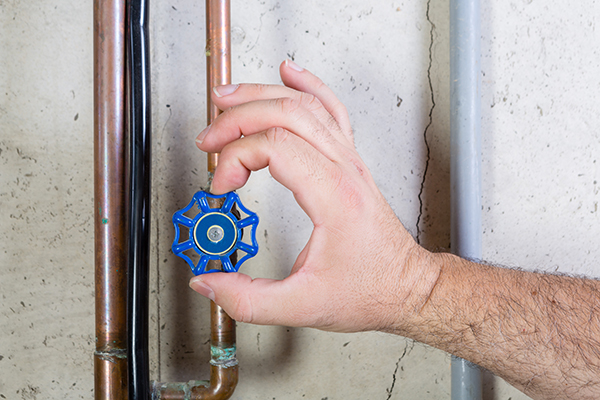
FEBRUARY
Safety first.
Test all your smoke, carbon monoxide, and water-leak detectors. Test and reset outlets equipped with ground-fault circuit interrupters (GFCIs) and arc-fault circuit interrupters (AFCIs). Make sure any home security devices work.
Plan for potential plumbing problems.
Test the main water shutoff valve to your home by closing it completely, then reopening it to make sure it is working properly. Make sure everyone who lives in your home knows its location and how to use it. If you don’t know where it is, ask a plumber to give you a tour; then label it with instructions for turning it off. If a pipe bursts, quickly stopping the flow can prevent extensive damage. Also, close and then reopen all shutoff valves for toilets and sinks to prevent them from seizing up from non-use; while you’re at it, check them for corrosion and water stains from leaks. Don’t worry if you see a few drops of water drip from the valve while doing this; it’s a common result of infrequent use and should stop by itself.
Avoid a lint firetrap.
Unplug the clothes dryer and, if you have a gas model, shut off the valve and disconnect the supply line. Then remove the clothes dryer exhaust hose and inspect and clean out any lint buildup from it and the dryer’s accessible innards. If you have a plastic or foil vent hose—which looks like a giant Slinky—replace it with a rigid or semi-rigid metal duct to reduce fire risk.
Stay on the rails.
Check that handrails for all stairs are sturdy; secure loose ones.
Faucet fest.
Check faucet aerators and showerheads, and remove mineral deposits, if necessary, by wiping them with a towel soaked in white vinegar.
Free floor drains.
A stopped-up drain can create an incredibly expensive maintenance reminder. Pour water into indoor drains to make sure they, well, drain. Make sure outdoor drains aren’t covered or clogged with debris.
Secure your perimeter.
Most burglars get into homes through unlocked or poorly secured doors and windows. Evaluate your home’s security vulnerabilities and defenses by checking for and replacing weak locks and dead outdoor security light bulbs and pruning back landscaping that bad guys might hide behind. In our home security section we provide dozens of tips for securing your castle.
Laundry duty.
If your clothes washer has a self-clean cycle, run it. If not, run a full wash cycle without any clothes, filling the detergent dispenser with white vinegar OR bleach or using a special washing machine cleaning product (made by OxiClean, Clorox, and Tide, among others). Note: Never mix vinegar and bleach; doing so creates toxic chlorine gas fumes.
Icemaker investigation.
Pull out the storage bin for your icemaker, toss all cubes, and wipe it down. Then, if there’s a filter attached to the refrigerator’s water supply line, replace it.

MARCH
Fire drill.
Swap out all batteries for your smoke and carbon monoxide detectors or, better still, get 10-year batteries for them; then, test all of them. Review evacuation procedures with your family so they know of possible escape routes and understand what to do to get out of the house within seconds. Check that fire extinguishers remain located in commonsense spots (kitchen, laundry, garage, and near furnace and water heater) and that they are fully charged, undamaged, and unexpired.
Double-check ductwork.
Check for holes or gaps in exposed ductwork, and seal them with mastic tape or HVAC foil tape. Leaky ducts can waste 20 percent or more of your home heating energy. Do not worry about having your ducts regularly cleaned; despite what the duct-cleaning industry says, very few homes need that service.
Wiring worries.
Look for and replace any frayed electric cords. Avoid running any cords beneath carpeting or rugs and using extension cords as permanent solutions to plug in stuff.
My front-loading clothes washer has a filter?
Unplug your washer and locate its debris filter. Its location and maintenance vary by manufacturer and model (consult your owner’s manual); most can be pulled out and degunked with a brush. Then check for and remove excess lint buildup in the filter compartment.
Tree time.
Trim back shrubs and any landscaping that touches your house. Remove dead and dying trees and large limbs. Prune branches that might rub against or fall on your house. To prevent stripping off bark, stub-cut branches that are too large to be supported by hand, making a final cut that leaves behind a smooth trunk. Keep in mind that pruning coniferous trees—such as pines, spruces, firs, and yews—is different from pruning other trees and shrubs, since they don’t replace growth. If you prune them for shape or size, you’ll have to live with the results. For major pruning or removal jobs, or to deal with limbs that might interfere with utility lines, hire a top-rated tree care service.
Repress roots.
If you’ve had backups in your main sewer line due to tree roots, flush half a cup of copper sulfate crystals down a commode (don’t pour it down a sink or bath drain; that might corrode your indoor pipes).
Sink it.
Clear out all the clutter underneath your kitchen and bathroom sinks, turn on the taps and your garbage disposer, and look for leaks from above.
Keep your water soft.
If you have a water softener system, check and flush the resin bed with water softener cleaner, and rub down the internal parts of the venturi valve with soap and water.

APRIL
Safety first.
Test all your smoke, carbon monoxide, and water-leak detectors. Test and reset outlets equipped with ground-fault circuit interrupters (GFCIs) and arc-fault circuit interrupters (AFCIs). Make sure any home security devices work.
Watch washing machine hoses.
To avoid a flood, check rubber washing machine hoses for blistering, stress cracks, wear, or loose connections. Consider replacing rubber hoses with reinforced steel braided hoses. It’s an easy task, and steel ones are less likely to fail.
Spring cleaning.
Clear out the junk cluttering your house. Click here for ideas on getting rid of your unwanted stuff. They include: decluttering tips; joining neighborhood Buy Nothing groups; reselling unwanted clothes; and shuttling an entire houseful of stuff via an estate sale. We also have advice on hazardous household waste disposal—in general, if a product is labeled with “Caution,” “Warning,” “Danger,” or “Poison,” it deserves special handling. Comfortable with your clutter? At least make sure nothing is stashed within three feet of a furnace, water heater, space or baseboard heater, wood stove, or fireplace.
Check for pest nests.
Inspect for and deal with any carpenter ants, termites, wasps, rodents, and other destructive pests. If you’re being bugged, before calling the pros see what you can do on your own. We have tips for eliminating the most common household pests. Except for termites and bedbugs, you can zap most creepy crawlies with a modest amount of effort.
Program your thermostat.
By sticking to a programmable thermostat program, you’ll save a lot of energy. If your home is unoccupied during the day, you can save 20 to 35 percent per year on heating costs by letting the temp decrease while you are away and lowering it again when you’re snuggled under blankets at night; you’ll get similar savings during summers by letting AC temps increase when you’re not home. Unfortunately, many homeowners who have programmable thermostats don’t use them, but new models make programming a snap; popular ones made by Nest and others even program themselves.
Replace HVAC filters.
The most important task for maintaining your heating and cooling systems is to check your filter monthly to determine how quickly it gets matted with dirt at different times of the year. When it’s too difficult to see through when you hold it up to a light, replace it (usually at least four times a year).
Ceiling-fan switch.
Flip the directional switch on your ceiling fans to make the blades spin counterclockwise for summer.
Post-winter work.
Inspect, repair, and correct damage from the deep freeze/rainy season. Check roof, siding, flashing, and caulking around windows, doors, and siding joints. Look for rotting wood, peeling paint, deteriorated seals, and so on. Inspect fences, decks, or other wooden structures to determine if they need to be resealed, repaired, or replaced.

MAY
Safety first.
Test all your smoke, carbon monoxide, and water-leak detectors. Test and reset outlets equipped with ground-fault circuit interrupters (GFCIs) and arc-fault circuit interrupters (AFCIs). Make sure any home security devices work.
Sharpen lawnmower blades.
Many hardware stores and tool rental shops offer this service. Keep blades sharp to avoid tearing grass leaves, which makes them brown and vulnerable to pests.
Mow high and don’t bag grass clippings.
Throughout the dreaded lawn work months, don’t mow too short. Most lawns should not be cut below a height of about 2½ to three inches, but zoysia grass should be mowed to about one inch. Leave clippings on the lawn so they can decompose and fertilize the soil, but spread out or remove big clumps of clippings.
Who’ll stop the rain?
Stroll around your home’s perimeter while it’s raining and make sure runoff is flowing away from, not toward, the walls. Make sure water from gutters splashes at least three or four feet away from your home and that there is no pooling in your yard that remains for more than 15 minutes or so. If you spot problems, consider hiring a drainage outfit for regrading work. Avoid basement waterproofing contractors, who often push costly and unnecessary systems.
Test your sump pump’s backup plan.
If your basement is finished and/or your sump pump often activates, consider adding a second sump pump to your system plus a moisture alarm to the top of the sump pit to avoid surprise floods. Click here for more advice on what to do about wet basements.
Free floor drains.
A stopped-up drain can create an incredibly expensive maintenance reminder. Pour water into indoor drains to make sure they, well, drain. Make sure outdoor drains aren’t covered or clogged with leaves and other debris.
Throw open the windows.
In the process, check that locks still work and that rarely used ones still open and shut.
Look for leaks.
After heavy rain, check your attic for wet or water-discolored wood, especially around your chimney, usually the most vulnerable spot for seepage. Then examine your basement, cellar, or crawlspace to look for moisture problems. Throughout your home, regularly inspect all ceilings and walls for discoloration and blistering/bubbling paint, wallpaper, or plaster—sure signs of plumbing or roofing leaks above. Moisture meters are handy for finding hidden H2O headaches behind walls and tile. Click here for roofing help.
Laundry duty.
If your clothes washer has a self-clean cycle, run it. If not, run a full wash cycle without any clothes, filling the detergent dispenser with white vinegar OR bleach or using a special washing machine cleaning product (made by OxiClean, Clorox, and Tide, among others). Note: Never mix vinegar and bleach; doing so creates toxic chlorine gas fumes.
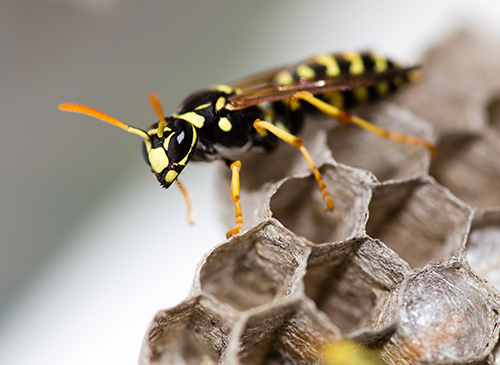
JUNE
Safety first.
Test all your smoke, carbon monoxide, and water-leak detectors. Test and reset outlets equipped with ground-fault circuit interrupters (GFCIs) and arc-fault circuit interrupters (AFCIs). Make sure any home security devices work.
Check for pest nests.
Inspect for and deal with any carpenter ants, termites, wasps, rodents, and other destructive pests. If you’re being bugged, before calling the pros see what you can do on your own. Click here for tips for eliminating the most common household pests. Except for termites and bedbugs, you can zap most creepy crawlies with a modest amount of effort.
Prepare to beat the heat.
Uncover and trim back growth, and clear away debris from around the outdoor air-conditioning unit. If you have window units, wash or replace their filters. Other maintenance tasks—including cleaning central AC condenser coils, testing capacitors, and checking refrigerant levels—are usually performed only by professionals. But because it’s unclear if these tasks are needed every year, we say the annual maintenance plans offered by HVAC services usually aren’t worth buying.
Can we caulk?
Examine and re-caulk and re-grout (as necessary) bathtubs, showers, and sinks.
Walk the walks.
Check sidewalks, patios, driveways, stairs, and other hardscaping; repair cracks, level uneven sunken or raised bricks/blocks/pavers; and replace anything that needs replacing.
Repress roots.
If you’ve had backups in your main sewer line due to tree roots, flush half a cup of copper sulfate crystals down a commode (don’t pour it down a sink or bath drain; that might corrode your indoor pipes).
Sink it.
Clear out all the clutter underneath your kitchen and bathroom sinks, turn on the taps and your garbage disposer, and look for leaks from above.
What’s going on behind your refrigerator’s back?
Unplug and pull out the refrigerator, and vacuum up all the puffy dust underneath and on the coils in back. Check door seals; replace if they are old and no longer airtight.
Take your water heater’s temp.
Check the setting—most models should be set between 120° and 140°. Running the burner at the lower end of that range saves energy and extends the life of the appliance. Follow manufacturer’s instructions on draining the sediment from the bottom of your model. If it seems too complicated, ask a plumber or HVAC repairperson to do it for you the next time one comes to your home to fix something else. Tankless water heaters need maintenance, too, particularly flushing with vinegar to remove lime scaling that can build up and reduce efficiency. Again, check your owner’s manual for what to do and how to do it.
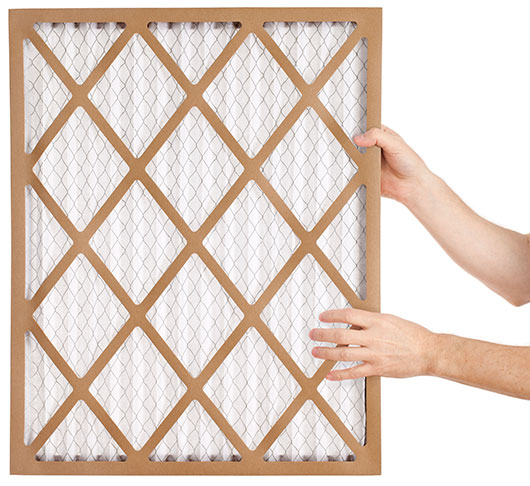
JULY
Safety first.
Test all your smoke, carbon monoxide, and water-leak detectors. Test and reset outlets equipped with ground-fault circuit interrupters (GFCIs) and arc-fault circuit interrupters (AFCIs). Make sure any home security devices work.
Power wash-up.
Spray away the grime from walks, decks, stairs, siding, and masonry. Be careful: Although most power washers are point-and-shoot machines that don’t require a lot of finesse, you can still do significant damage to your home, yourself, and others. In particular, guard against electric shock by avoiding adaptor plugs that might defeat grounding systems, wear rubber-soled shoes, and keep high-pressure spray away from electric wiring, receptacles, and lights. And never point the wand at a person or test water pressure against your hand or foot.
Canvass commodes.
Slow toilet leaks silently waste gallons of water every day. To check yours, add a dozen drops of food coloring to the tank. Come back in an hour; if the color is gone or has made its way into the bowl, you have a leak. You might need to change a worn rubber flapper or diaphragm seal, or adjust the fill valve or ballcock (that big round thing attached to a rod). There are lots of videos online that explain how to do this.
Squeegee time.
Clean your windows or see our ratings for quality and price of area window cleaning operations.
Replace HVAC filters.
The most important task for maintaining your heating and cooling systems is to check your filter monthly to determine how quickly it gets matted with dirt at different times of the year. When it’s too difficult to see through when you hold it up to a light, replace it (usually at least four times a year).
Secure your perimeter.
Most burglars get into homes through unlocked or poorly secured doors and windows. Evaluate your home’s security vulnerabilities and defenses by checking for and replacing weak locks and dead outdoor security light bulbs, pruning back landscaping that bad guys might hide behind, and changing your locks if you’ve recently lost your keys. Click here for dozens of tips for securing your castle.
Watch washing machine hoses.
To avoid a flood, check rubber washing machine hoses for blistering, stress cracks, wear, or loose connections. Consider replacing rubber hoses with reinforced steel braided hoses. It’s an easy task, and steel ones are less likely to fail.
My front-loading clothes washer has a filter?
Unplug your washer and locate its debris filter. Its location and maintenance vary by manufacturer and model (consult your owner’s manual); most can be pulled out and degunked with a brush. Then check for and remove excess lint buildup in the filter compartment.
Keep your water soft.
If you have a water softener system, check and flush the resin bed with water softener cleaner, and rub down the internal parts of the venturi valve with soap and water.
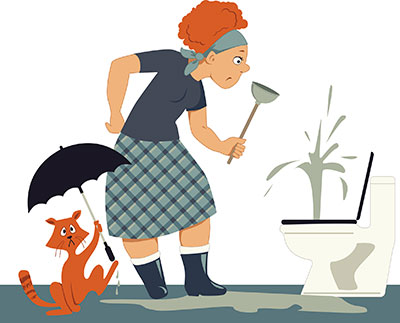
AUGUST
Safety first.
Test all your smoke, carbon monoxide, and water-leak detectors. Test and reset outlets equipped with ground-fault circuit interrupters (GFCIs) and arc-fault circuit interrupters (AFCIs). Make sure any home security devices work.
Chimney chores.
Check for excessive buildup of soot and creosote, the flammable black stuff that can coat chimneys’ innards and create a fire hazard. There is no set timeframe for how often to have a chimney swept—it all depends on its design and how often you use yours. The Chimney Safety Institute of America (CSIA) recommends cleaning when there’s 1/8 inch of sooty buildup in masonry fireplaces, sooner for factory-built fireplaces. The problem is that, while chimney fires are extremely destructive, ratings we get for chimney services often indicate many companies use inspect-and-sweep opportunities to recommend expensive, unneeded work. So proceed cautiously if a chimney service says yours is unsafe unless you pay thousands for a new liner or similar expensive repairs.
Free floor drains.
A stopped-up drain can create an incredibly expensive maintenance reminder. Pour water into indoor drains to make sure they, well, drain. Make sure outdoor drains aren’t covered or clogged with leaves and other debris.
Faucet fest.
Check faucet aerators and showerheads, and remove mineral deposits, if necessary, by wiping them with a towel soaked in white vinegar.
Avoid a lint firetrap.
Unplug the clothes dryer and, if you have a gas model, shut off the valve and disconnect the supply line. Then remove the clothes dryer exhaust hose and inspect and clean out any lint buildup from it and the dryer’s accessible innards. If you have a plastic or foil vent hose—which looks like a giant Slinky—replace it with a rigid or semi-rigid metal duct to reduce fire risk.
Icemaker investigation.
Pull out the storage bin for your icemaker, toss all cubes, and wipe it down. Then, if there’s a filter attached to the refrigerator’s water supply line, replace it.
Laundry duty.
If your clothes washer has a self-clean cycle, run it. If not, run a full wash cycle without any clothes, filling the detergent dispenser with white vinegar OR bleach or using a special washing machine cleaning product (made by OxiClean, Clorox, and Tide, among others). Note: Never mix vinegar and bleach; doing so creates toxic chlorine gas fumes.
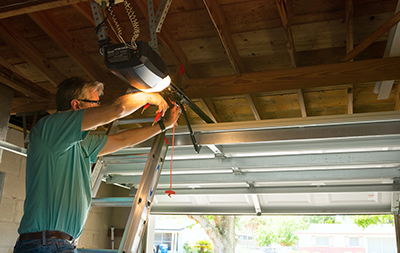
SEPTEMBER
Safety first.
Test all your smoke, carbon monoxide, and water-leak detectors. Test and reset outlets equipped with ground-fault circuit interrupters (GFCIs) and arc-fault circuit interrupters (AFCIs). Make sure any home security devices work.
Inspect garage doors.
Check its safety reverse function and that electric eyes are positioned correctly. If needed, clean the tracks and grease roller wheel axles. Check your unit’s owner’s manual for best practices.
Check for pest nests.
Inspect for and deal with any carpenter ants, termites, wasps, rodents, and other destructive pests. If you’re being bugged, before calling the pros see what you can do on your own. Click here for tips for eliminating the most common household pests. Except for termites and bedbugs, you can zap most creepy crawlies with a modest amount of effort.
Sink it.
Clear out all the clutter underneath your kitchen and bathroom sinks, turn on the taps and your garbage disposer, and look for leaks from above.
Repress roots.
If you’ve had backups in your main sewer line due to tree roots, flush half a cup of copper sulfate crystals down a commode (don’t pour it down a sink or bath drain; that might corrode your indoor pipes).
Look for leaks.
After heavy rain, check your attic for wet or water-discolored wood, especially around your chimney, usually the most vulnerable spot for seepage. Then examine your basement, cellar, or crawlspace to look for moisture problems. Throughout your home, regularly inspect all ceilings and walls for discoloration and blistering/bubbling paint, wallpaper, or plaster—sure signs of plumbing or roofing leaks above. Moisture meters are handy for finding hidden H2O headaches behind walls and tile. Click here for roofing help.
Help your humidifier.
If you have a whole-house model, clean it according to directions in its owner’s manual. This usually involves adding a bit of vinegar or a calcium-removing solution like Lime-A-Way.
Test your sump pump’s backup plan.
If your basement is finished and/or your sump pump often activates, consider adding a second sump pump to your system plus a moisture alarm to the top of the sump pit to avoid surprise floods. Click here for more advice on what to do about wet basements.

OCTOBER
Safety first.
Test all your smoke, carbon monoxide, and water-leak detectors. Test and reset outlets equipped with ground-fault circuit interrupters (GFCIs) and arc-fault circuit interrupters (AFCIs). Make sure any home security devices work.
Acid test your lawn.
Test the pH level of your lawn’s soil. Generously fertilizing your lawn can have little effect if its acid balance—pH reading—is not right. Your grass won’t be able to use the nutrients if the soil is too acidic or too alkaline. Most grass varieties grow best when the pH reading is between 6.0 and 7.0 (slightly acidic). If your pH level is too low (5.5 or less), apply some lime.
Fertilize flora.
Think of fertilizer as vitamins for your lawn. Lawns and plants usually benefit most from fall fertilizations. Consult with garden guides or experts to make sure you apply it properly; fertilizer is not a more-is-better thing.
Replace HVAC filters.
The most important task for maintaining your heating and cooling systems is to check your filter monthly to determine how quickly it gets matted with dirt at different times of the year. When it’s too difficult to see through when you hold it up to a light, replace it (usually at least four times a year).
Ceiling-fan switch.
Flip the directional switch on your ceiling fans to make the blades spin clockwise for winter. That pulls cooler air up to the ceiling and pushes the warmer air down to you.
Forestall freeze-ups.
Close off the valves to any outdoor faucets; then open their spigots and/or bleeder valves to drain any remaining water from pipes. Remove, drain, and stow garden hoses. Check crawlspaces, unheated basements or cellars, and other unconditioned areas of your home to make sure that any water pipes running through them are insulated to prevent freezing. If you have an irrigation system, shut off its water supply and use compressed air to clear out the works.
Program your thermostat.
By sticking to a programmable thermostat program, you’ll save a lot of energy. If your home is unoccupied during the day, you can save 20 to 35 percent per year on heating costs by letting the temp decrease while you are away and lowering it again when you’re snuggled under blankets at night; you’ll get similar savings during summers by letting AC temps increase when you’re not home. Unfortunately, many homeowners who have programmable thermostats don’t use them, but new models make programming a snap; popular ones made by Nest and others even program themselves.
Who’ll stop the rain?
Stroll around your home’s perimeter while it’s raining and make sure runoff is flowing away from, not toward, the walls. Make sure water from gutters splashes at least three or four feet away from your home and that there is no pooling in your yard that remains for more than 15 minutes or so. If you spot problems, consider hiring a drainage outfit for regrading work. Avoid basement waterproofing contractors, who often push costly and unnecessary systems.
Free floor drains.
A stopped-up drain can create an incredibly expensive maintenance reminder. Pour water into indoor drains to make sure they, well, drain. Make sure outdoor drains aren’t covered or clogged with leaves and other debris.
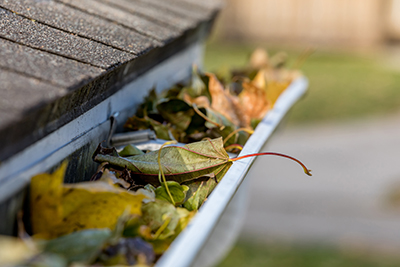
NOVEMBER
Fire drill.
Swap out all batteries for your smoke and carbon monoxide detectors or, better still, get 10-year batteries for them; then, test all of them. Review evacuation procedures with your family so they know of possible escape routes and understand what to do to get out of the house within seconds. Check that fire extinguishers remain located in commonsense spots (kitchen, laundry, garage, and near furnace and water heater) and that they are fully charged, undamaged, and unexpired.
Get it out of the gutters.
It’s a messy job, but someone should clean the gutters. Stopped-up gutters can cause major problems, from wet basements and crawlspaces to ruined siding and trim to damaged interior walls. Gutter guards mean less-frequent cleaning, but these devices won’t nab everything. When moving your ladder and while working, make sure to give power lines a wide berth: They may not be properly insulated; touching one, particularly with a metal ladder or while standing on a metal ladder, could kill you. Many workers and homeowners die this way each year. Electricity can also arc or spark from a high-voltage line to a metal ladder that gets too close. A dry fiberglass ladder is safer but still may not prevent shocks. Want someone else to do your dirty gutter work? Consult ratings in our “Gutter Cleaners” section.
Watch washing machine hoses.
To avoid a flood, check rubber washing machine hoses for blistering, stress cracks, wear, or loose connections. Consider replacing rubber hoses with reinforced steel braided hoses. It’s an easy task, and steel ones are less likely to fail.
Laundry duty.
If your clothes washer has a self-clean cycle, run it. If not, run a full wash cycle without any clothes, filling the detergent dispenser with white vinegar OR bleach or using a special washing machine cleaning product (made by OxiClean, Clorox, and Tide, among others). Note: Never mix vinegar and bleach; doing so creates toxic chlorine gas fumes.
Keep your water soft.
If you have a water softener, check and flush the resin bed with water softener cleaner, and rub down the internal parts of the venturi valve with soap and water.
Bleed radiators.
If your heating system uses hot water, bleed the air out of its pipes. For most systems, this is accomplished by turning small valves located near the top or bottom of radiators to release steam; stay alert to retighten them when very hot water begins to escape. Start with units on your home’s lowest floor and work your way upward.
My front-loading clothes washer has a filter?
Unplug your washer and locate its debris filter. Its location and maintenance vary by manufacturer and model (consult your owner’s manual); most can be pulled out and degunked with a brush. Then check for and remove excess lint buildup in the filter compartment.

DECEMBER
Safety first.
Test all your smoke, carbon monoxide, and water-leak detectors. Test and reset outlets equipped with ground-fault circuit interrupters (GFCIs) and arc-fault circuit interrupters (AFCIs). Make sure any home security devices work.
Insurance audit.
Review your policy to make sure coverage limits are sufficient. It is especially important to obtain an accurate estimate of your home’s replacement cost to determine how much dwelling insurance you need. The replacement value isn’t the same as market value; the latter includes the value of the land and your home’s foundation—two expensive components of your property that don’t need to be insured against wind, fire, etc. Replacement value is an estimate of what it would cost to rebuild your house completely on the land that you own. Many U.S. homes are underinsured. Also, document what you own. The fastest way is to walk around your home while recording a video; don’t forget to shoot the contents of closets and drawers. Click here for advice and ratings of home insurance companies.
Happy holidays!
Relieve yourself of further home maintenance work to enjoy/mentally prepare for the holiday season/slog. And be careful while stringing up all those lights.


